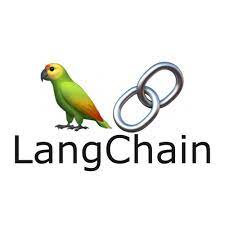LangChain
LangChain is at the forefront of enhancing language models, offering a suite of tools designed to amplify their integration and functionality within various applications. This innovative framework is reshaping how developers and businesses leverage AI for linguistic tasks.


Core Features
LangChain's standout features include a comprehensive toolset for chaining together language models, facilitating a modular approach to AI-driven solutions. Its intuitive interface ensures that even those with minimal AI expertise can harness the power of cutting-edge language models. The framework's versatility supports a wide array of applications, from automated content generation to sophisticated AI chat interfaces.
Technical Architecture
At its core, LangChain employs a modular architecture that allows developers to "chain" together different components of language models and processing units. This design supports a plug-and-play approach, enabling the integration of various AI models and custom logic with minimal friction.
- Component-based Structure: LangChain's architecture is built around the concept of discrete components that can be independently developed, tested, and integrated. This includes pre-processors, post-processors, and the language models themselves.
- Interoperability: It emphasizes interoperability between different language models and APIs, supporting a wide range of AI platforms and technologies.
- State Management: LangChain includes sophisticated state management capabilities, enabling the tracking and manipulation of conversational context across multiple interactions.
Integration Process
Integrating LangChain into an existing system is designed to be straightforward, with clear documentation and support for standard development practices.
- API Integration: Developers can interact with LangChain through well-defined APIs, allowing for easy integration with existing software infrastructures.
- Customization and Extension: LangChain is built with customization in mind, offering hooks and extension points where developers can insert custom logic or specialized processing units.
- Scalability: The framework is designed to scale, accommodating projects ranging from small-scale applications to enterprise-level solutions.
Technical Capabilities
LangChain's technical capabilities extend beyond simple language model integration, offering features that cater to complex AI-driven solutions.
- Advanced NLP Features: It includes support for advanced natural language processing (NLP) tasks such as sentiment analysis, entity recognition, and language translation.
- Dialogue Management: The framework offers robust dialogue management tools, enabling the creation of sophisticated conversational agents that can maintain context and manage complex user interactions.
- Performance Optimization: LangChain provides tools for optimizing the performance of language models, including techniques for reducing latency and managing computational resources effectively.
Applications and Use Cases
From enhancing customer service bots with more natural conversations to powering in-depth data analysis tools, LangChain's applications are vast and varied. Its adaptability makes it an invaluable asset across sectors, including finance, healthcare, and education, where the integration of advanced language models can drive significant efficiencies and innovations.
Future Prospects
As LangChain continues to evolve, its impact on the tech landscape is poised to grow. Anticipated developments in the framework are expected to further democratize access to advanced AI, enabling even more innovative applications and use cases. The ongoing advancement of LangChain is likely to play a pivotal role in shaping the future of AI-driven communication and analysis.
Unlock the Power of AI with LangChain
Start integrating advanced language models into your applications today.
What is LangChain?
LangChain is a sophisticated framework that enables the seamless integration and extension of language models across diverse applications. Created with the vision to bridge gaps in language AI usability, it simplifies the incorporation of complex language models into software solutions, making advanced AI more accessible to developers. The platform stands out for its user-centric design, focusing on ease of use without compromising on power or flexibility.
Latest Stories
Here's what we've been up to recently.

Unveiling the Power of dlib: A Journey into Image Processing
Explore how dlib, renowned for its facial recognition and object detection capabilities, harnesses the Histogram of Oriented Gradients (HOG) method and Support Vector Machines (SVM) to transform images into condensed vectors for advanced analysis. Learn how the dlib library handles determining which images are similar and which are not.
4 min read | 01 Feb 2024

Digital Signatures Decoded: Custom Online Signing
Delve into the evolving landscape of online signing, comparing top platforms and unveiling the benefits of custom solutions like PDF.js and PDF-lib.js for modern businesses.
4 min read | 30 Jan 2024

Agricultural Apps & AI
Explore the revolutionary integration of AI and AR in agricultural technology
18 min read | 09 Jan 2024
